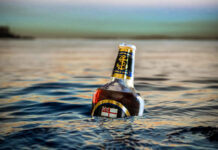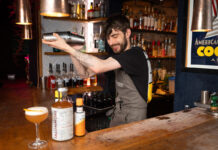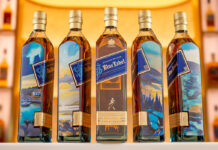Operators can attract all age groups with the right range of malts

UNTIL recently, whisky was the second best-selling spirit in Scotland, surpassed only by vodka. But times are changing, with recent data from CGA revealing that gin sales in bars across the country have officially overtaken sales of Scotch and imported whisk(e)y in the past year.
Yet despite this shift, demand for quality drams remains strong, according to drinks firms, who told SLTN that operators should pay special attention to their whisky collection ahead of the lucrative winter season.
Michael Green, senior whisky specialist at Edrington Beam-Suntory UK, which counts Laphroaig and Highland Park within its Scotch stable, said: “The number of consumers enjoying gin in the on-trade continues to grow; in the last three years alone we have seen the number of gin drinkers grow by four million.
“That said, our data shows that the number of consumers drinking whisky is also on the rise, meaning that there is an increasing overlap amongst gin and whisky consumers.”
Green added that there “is evidence that a large percentage of drinkers are adding both spirits to their repertoire”.
Joanne Motion, UK customer marketing manager at Glengoyne and Tamdhu parent firm Ian Macleod Distillers, agreed that whisky is a category that remains strong and in growth.
“Whisky continues to recruit new drinkers, particularly younger consumers, as we cut through the complexity and stuffy misconceptions of whisky – instead focusing on the flavours, quality and mixability of the spirit,” said Motion.
In fact, there are parallels with the early days of the gin boom, according to Charles Root of mixer brand Fever-Tree.
He said the company has noticed a similar demand for quality long dark spirits serves, mirroring the rise of premium gin.
“We’re continuing to see a preference for long mixed drinks using high quality components – the growth of gin and our love for the G&T demonstrated a real desire for these simple, delicious long drinks and we’re seeing the same trends with dark spirits, including whisky,” said Root.
The whisky category is ideally placed to capitalise on a growing number of consumers prioritising quality over quantity, reckons Sarah Clark, senior global trade marketing manager at Old Pulteney owner International Beverage Holdings.
She said: “People come into the whisky category from across the board, but usually when they are seeking to explore something new and trade up to a more premium drinking experience – particularly so with younger drinkers who increasingly choose quality over quantity at the bar.
“So, overall I think there is much to be positive about the timeless appeal of whisky, which I’m confident will endure as spirit trends ebb and flow. Saying that, there is always work to be done to engage and excite drinkers with whisky products.”
The range and pricing of a bar’s whisky range is also paramount.
Scott McCafferty, brand manager of Highland Park, said: “While pricing structure is extremely important for licensees to ensure they capitalise on the growing whisky category, this must go hand in hand when considering flavour.
“We know as consumers become more experimental and gain knowledge, they want to try something a bit more complex, and we’ve seen this with the recent growth of peated single malt.
“I would advise ensuring licensees have all of the flavour profiles covered to entice consumers, no matter their knowledge, to try something new.”



















